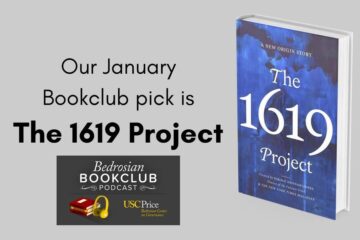Checking Out City Librarian John Szabo
If you thought that libraries were just in the business of lending books, you may not have been into a Los Angeles Public Library under John Szabo’s watch.
Since coming aboard as head of the Los Angeles Public Library and its 73 locations across the city in 2012, Szabo has embraced a broad vision of the role of the library as an important civic resource in the lives of Angelenos. From providing information and support on healthcare issues to opening new frontiers in education, the Los Angeles Public Library is challenging expectations of what services a library should provide and establishing its place as an crucial part of civic infrastructure in the 21st century. Szabo made a visit to the Bedrosian Center’s Lunch with a Leader speaker series to share some of the exciting initiatives taking place in libraries across the city as well as some of the unique challenges posed by an institution that has one foot in the public sector and another in the philanthropic and nonprofit worlds.

Citizenship Booth at LAPL (photo by Jeremy Loudenback)
Innovation has been a notable hallmark of Szabo’s tenure as city librarian. Though the lending library is still as important as ever, Szabo sees the library branches as critical democratic spaces, free and open place that residents can turn to for support on critical issues facing communities. The library just wheeled out an online high-school diploma program, the first of its kind in the nation and a pressing need for a city in which 25% of residents lack a high school diploma. All 73 branches also offer workshops and information for people seeking a path to U.S. citizenship, and with more 700,000 Angelenos accessing naturalization services, the program has been a model for other library systems, from Chicago to Nashville. The Los Angeles Public Library has also broken new ground with several programs designed to address the health and well-being of communities across the city, utilizing partnerships with the California Endowment and the United Health Foundation.
“We’re doing really great work with the Affordable Care Act and partnering with Covered California because we know that with the health exchange coming along, people are going to come to the public library because of our technology, because we’re the place to go for information and because we’re trusted,” Szabo said. “But we’re also doing a lot of work in the public health arena, looking at where health disparities are in L.A., and targeting specific health programming around that. So if there’s a health disparity in one neighborhood, say a cardiovascular diseases health disparity in this neighborhood, we’re looking at how we can provide target programming around that. Where are the food deserts? Are there things that we can do with urban gardening and that kind of work?”
According to Szabo, Los Angeles has provided an ideal place to explore innovative approaches to library programming, opportunities that aren’t always available in other parts of the country. His decision to empower employees to pursue innovation has paid dividends.
“One of my messages to staff when I first came here was be as innovative as you can without going to jail,” he said with a laugh. “It’s getting my senior-level administrative staff to not be afraid to empower mid-level managers and front-line library staff to go be their creative selves and to develop partnerships and tailor programming to meet those community needs.”
Innovation in the library is not limited to just public programming. Funding for the library involves an interesting amalgam of public, nonprofit, business, and philanthropic interests that speaks to the special place that libraries occupy in civic life.
“We’re very unique in local government,” Szabo said. “There’s not a Friends of the Sanitation Department.”
Though most of the library’s funding comes through the property tax dollars through the city of Los Angeles, the library also features a robust fundraising arm that helps fund the library’s new initiatives and spur partnerships. While the combination of different funding streams has created fruitful collaborations, it also raises separate leadership challenges, from providing opportunities for the businesses to participate in an area where many are sensitive to private-sector involvement to making sure that the fundraising efforts of the library’s 68 affiliated nonprofits don’t overlap with larger initiatives and managing the expectations of all parties involved.
There’s also the challenge of creating good working relationships with community organizations and nonprofits.
“All sorts of nonprofits have been coming into our libraries,” Szabo said. “With some of them, it’s very organic, but with others, we actually have memorandums of understanding with them. We’re looking at partnering with nonprofits to take advantage of their unique expertise, especially around innovation. For example, we’re going to be building a maker space innovation lab at a couple of our libraries.”
With more than 14 million of people visiting the library every year, the Los Angeles Public Library is a well-used and popular institution. But Szabo wants to make sure that the library system is connecting needs of residents to services in the real world as well as in physical spaces.
“In a city like L.A. where people are making use of their libraries in so many different ways, I constantly have to keep my eyes on everything,” he said. “I also think about how we, in a savvy and strategic way, can thoughtfully let people know about those virtual resources and help engage them within our physical space.”
“All of us have certain warm fuzzy feelings about the library—we all have a library story. We do need to think about how we create opportunities to create those warm fuzzy feelings in a virtual environment and develop that relationship with our patrons in a mobile environment as well.”
[flickrset setid=”72157640978825963″ autoplay=”true” cover=”true” limit=”5″ titles=”hover”]



